In the first two years of World War II the Allies were stunned by the speed, coordination and efficacy of German’s armoured divisions, seemingly unstoppable. It was the success of the Blitzkrieg tactics, the ‘lightning war’. This success was attributed to the leadership and military genius of today’s protagonist.
Even before the war, his published works had brought him to the attention of military leaders worldwide. He became known as ‘The Father of Blitzkrieg’. His loyalty to Germany was undisputed, but his support of Hitler and Nazi leadership was not so clear cut. He was in fact one of the very few Generals who dared shouting back at the Fuhrer and even disobey his orders.
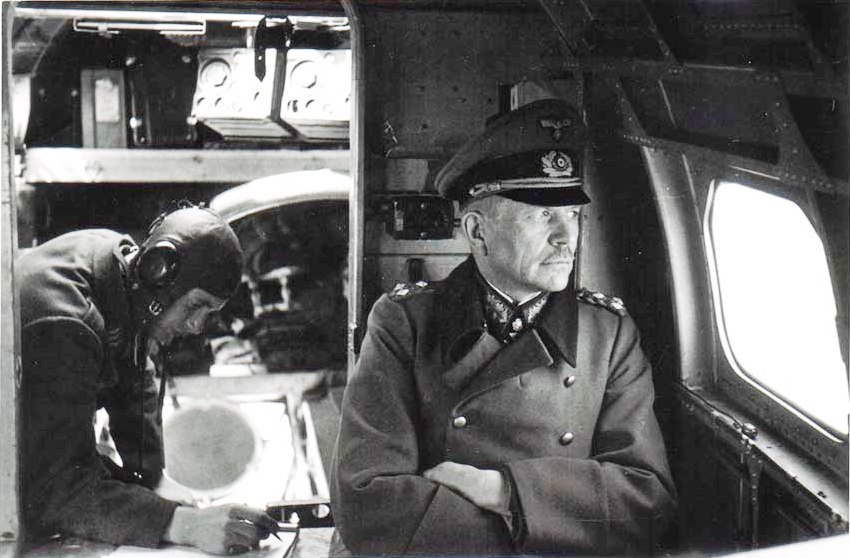
Please join me today for the story of General Heinz Guderian.
Some clarifications on Blitzkrieg tactics
Before we dive bomb like a Stuka into Heinz Guderian’s life, I will bore you with some military theory, as we need to clarify some concepts.
Blitzkrieg tactics can be defined as the use of combined forces of tanks, motorised infantry and artillery, breaking the opponent’s defences on a narrow front, bypassing pockets of resistance and striking deep into enemy territory. Ground forces are provided close support by the air force, tasked with bombing key objectives and establishing local air superiority.
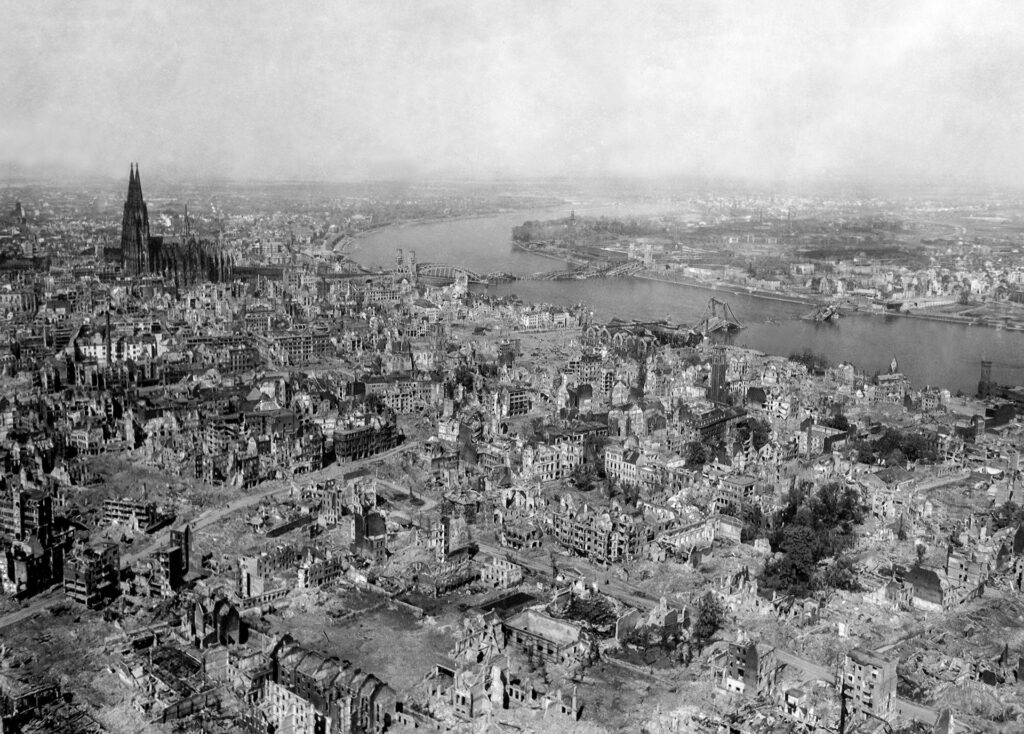
The term ‘blitzkrieg’, was actually coined by the British press, not by the German high command, as a means to describe the swift invasion of Poland in September 1939. German military would have used the term ‘Bewegungskrieg’, or “War of movement”, and it is a military doctrine, rather than a tactic.
A tactic is a method of employing forces in combat, or the ‘how’ you can win a battle.
Military doctrine is the set of principles by which Armed Forces are organised. Doctrine shapes strategies, which are the plans to achieve victory in a war.
I hope I got that right, if any of you have served, or are serving in the military, please feel free to correct me in the comments.
But going back to Bewegungskrieg, this doctrine had been shaping the German armed forces’ plans since WWI. Heinz Guderian and other military theorists after him, perfected the doctrine and took advantage of current technology to maximise the potential of its theoretical principles.
So, rather than calling Guderian ‘the father of Blitzkrieg’, he should be ‘the optimiser of Bewegungskrieg’. Not as catchy, I know. But with that out of the way, let’s begin with the life of Heinz.
Heinz Guderian was born on the 7th of June, 1888 in Kulm, Prussia, now in Polish territory. He came to life into a close-knit family with a long-standing military tradition. His father, Friedrich, had been a colonel in the Prussian, then German army.
Heinz followed his father’s career enthusiastically and as teenager enlisted in the Principal Cadet School in Berlin. He was an ambitious and determined student, his teachers described him as
‘always serious’
Well, not always. Sometimes he was described as
‘very serious’.
Heinz soon gained a useful leadership skill, that is the ability of speaking very concisely and clearly to communicate his ideas, and later his orders. At will, he could turn his communication style into one that was cold and hurting. This made him equally famous and feared at Cadet School, but not very popular. It appears he made no friends there, at least until he graduated and got his first command post.
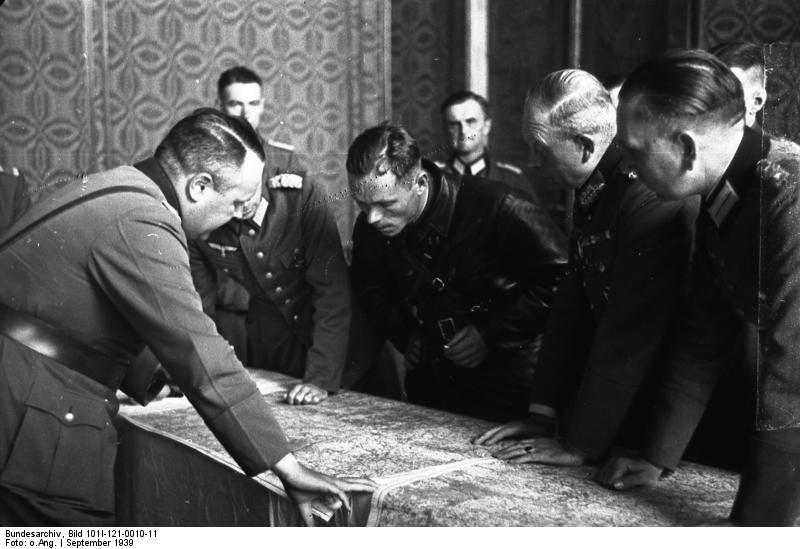
In 1907, aged 19, Heinz was sent to join the Tenth Battalion as 2nd Lieutenant under the command of his father. We don’t know if this was by design, but we do know that Heinz did not take advantage of the situation to just slouch around.
Friedrich Guderian was a stern leader, both loved and feared by his soldiers and his family, and he would not make any favours to his son. Heinz worked hard and learned a great deal from his father.
Two years later Heinz Guderian’s unit was transferred to the Goslar barracks in the Harz Mountains, one of the most scenic parts of Germany. He had some time to go horse riding, hunting and socialising, and so he met and fell in love with Margarete Goerne, whom he nicknamed Gretel.
Gretel was the perfect companion for Heinz, as she shared and supported his ambitious outlook on life. They would marry in 1913, and Heinz later described her as the perfect soldier’s wife: she could be cool and sensible when needed, most of all she was able to calm his husband when seized by frequent fits of anger.
Very often in his later life Guderian’s hot temper got him into trouble for lashing out at subalterns and superiors alike. On many occasions he had to be saved from disciplinary measures by a superior who appreciated his exceptional military ability, despite a poor impulse control. Later in life Guderian took snap decisions to disobey orders from above. He clearly had a talent for leading, he just couldn’t be bothered with following.
The year before his wedding, 1912, Heinz wanted to broaden his technical training and so he transferred to the Third Telegraph Battalion. Here he studied hard to become a specialist in the new radio-signal equipment. Already at this stage, he saw communications as a decisive element for military victory. His studies were not limited to radio: he studied military strategy, French and English, so he could study military theory text books in those languages.
His efforts were noticed, and Heinz was offered to join a class of 168 officers to attend a three-year program at the War Academy in Berlin. He was moving fast, so much so that he earned the nickname ‘Schnelle Heinz’, or ‘Quick Heinz’.
Although he did not see himself as necessarily ‘quick’. Heinz did not like to rush mindlessly into action, often quoting a line by military leader Helmuth von Moltke:
“First reckon, then risk,”
Heinz Guderian’s studies were interrupted when two gunshots rang out in Sarajevo on the 28th of June 1914: the assassination of Archduke Franz Ferdinand of Austria-Hungary led to the outbreak of World War I in a matter of weeks.
With his radio qualification, Guderian joined the wireless communication staff. In November of 1914, he was promoted to 1st Lieutenant and only one year later to Captain. His work allowed him to witness almost every front of the war, including the disaster on the Marne and the slaughter of Verdun. The carnage he viewed may have influenced his thoughts on developing mechanized warfare to protect the infantrymen and achieve quick victory.
He never had the chance to command a fighting unit, but his radio station sometimes came under attack and he had to fight his way out. As a result, he was awarded the Iron Cross second and first class.
In early 1918, he was tested at an advanced officer training programme, where he showed the ability for solving tactical problems with unusual actions. This impressed his instructors, which accepted his request to join the General Staff of the Army High Command.
It is evident how the WWI experiences shaped Guderian’s thoughts on Bewegungskrieg and how to improve it.
His post in charge of radio communications taught him the importance of the wireless, especially when it came to coordinating the movements of separate across infantry, artillery or cavalry.
Although not directly involved, Guderian studied the tactics employed by the Stosstruppen, also known as ‘Shock troops’ or ‘Storm troopers’. These units we usually successful in infiltrating weak spots of enemy trenches to encircle, capture or destroy command centres. But their successes were short-lived because of the limitations of, well, just being human. The extent of the advance of shock troops was limited by how fast and how far they could walk before succumbing to exhaustion. In many cases, capturing a well-stocked British or French position would mean failure, as shock troops just sat down to eat.
Guderian’s theories proposed to solve these limits by supporting infantry with mechanized and motorised units. They would require in turn the integration and coordination of separate arms at the lowest unit level, in mutually supportive functions.
In lay terms – if you have a platoon of infantry – 30-50 men – fighting alongside a tank platoon – 4 or 6 tanks – and they support each other, it is easier for them to cooperate, rather than having a whole division of 15,000 foot soldiers on one side, and a division of tanks on the other.
Again, my military friends, correct me if I am wrong.
War of Movement 2.0[TA1]
When the war ended in German defeat, the Treaty of Versailles allowed the Country to maintain only a small army of 100,000 troops, with no tanks nor aircraft.
Post-war, Guderian served as an instructor, teaching tactics and military history. It was during these years that he expanded, developed and perfected his take on the ideal War of Movement.
He would digest the works on mechanized warfare of British theorists Captain Liddell Hart and Major-General Fuller. He began publishing articles in military journals and won a reputation for clear thinking on controversial matters.

In 1927, he was promoted to the rank of Major. His role was at the head of the Command for all motorized transport units, and he also taught transport tactics at the Berlin military academy. Basically, his units were tasked with logistics and transport, not actual combat. But this did not prevent him from taking advantage and play around with his trucks.
He equipped some of these vehicles with wooden turrets, armed with guns, and he moved them around a training ground as fighting units. His superiors were not happy and put an end to his experiments. But what he could not learn at home, he would learn abroad.
In 1929, Guderian travelled to Sweden, where he visited a tank battalion, then to Kazan, Russia. Here he visited a secret tank testing facility co-developed by the Weimar Republic and the Soviet Government. Probably he met Soviet tank commanders who would later become his deadly enemies.
By 1933, when the National Socialist Party rose to power, Heinz was Colonel Guderian. Guderian continued with his articles about armoured and motorized warfare and helped with solving technical problems of the first Panzer specimens.
Guderian’ s theories would find fertile ground with the Nazis and their rearmament policies. In early 1934, Guderian organised a demonstration of Panzer tactics for Hitler. He later recalled
“The Chancellor was much taken by the speed and precision of movement of our units and said repeatedly ‘That’s what I need’!”
Hitler was ecstatic and would provide support to Guderian’ s innovation, even though the two men often clashed in spectacular shouting matches.
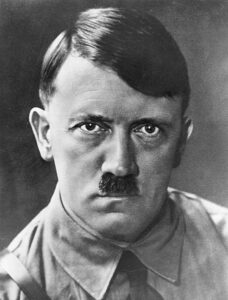
Nazi leadership proceeded to re-install conscription, thus ignoring the treaty of Versailles. Hitler himself authorized another violation of the treaty, that is the creation of three Panzer Divisions. Guderian was made the Commander of the 2nd Panzer Division and shortly after was promoted to Major General, then Lieutenant General in charge of the XVI Army-Corps.
In 1938 Guderian’s units were the spearhead of the Anschluss with Austria and the invasion of the Sudetenland, the German-speaking region of Czechoslovakia. These were the years of Appeasement, so the guns on his tanks were still silent.
A few months later, Guderian was promoted to Commander in Chief of all the Fast Troops, or Schnellen Truppen – the perfect job for Schnelle Heinz!
He was now in charge for the recruitment, training, tactics and technique of all motorized and armoured units. A great leader and poor follower, now Guderian would be able to bring the full weight of his studies, doctrine and personality to the German Panzer Divisions.
He could finally formalise and implement his take on the Bewegungskrieg. Which is:
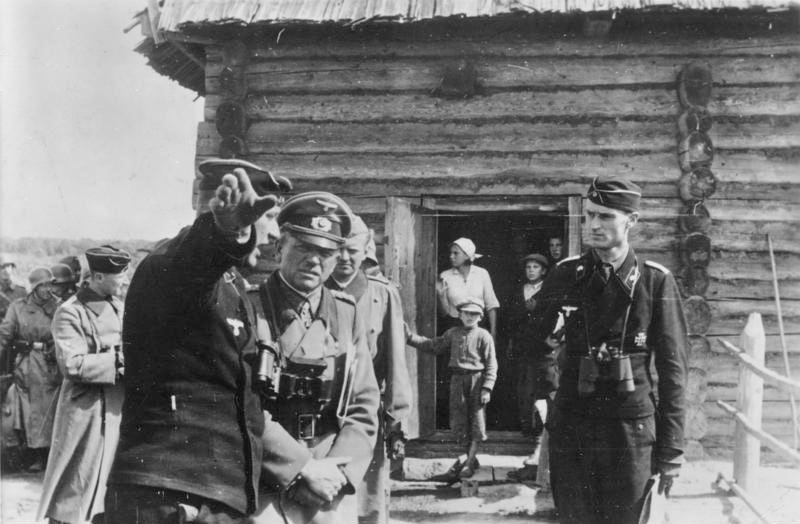
Nr one! Attacks should be led by large concentrated number of tanks. Tanks should not be dispersed amongst other units, like it was common practice in the British and French armies at that time. As Guderian put it:
“You hit somebody with your fist and not with your fingers spread”
Nr two! The infantry, transported by trucks and half-tracks, should closely follow the tank platoons to support them. This involves maintaining the logistics train, occupying positions, taking prisoners, neutralising anti-tank weapons.
Nr three! Aircraft and artillery are intended to support both tanks and infantry, by striking at enemy armour and fortifications from above and from afar.
Nr four! The units involved require a reliable means of communication. That involves connecting tanks via radio transmitters for coordinated joint action.
To generate public support for the Bewegungskrieg, Guderian wrote and published his first book:
‘Achtung! Panzer!’
That’s how you pronounce it by the way. It’s not just “Achtung, Panzer”. It’s “Achtung!!” “Panzer!!!!”[TA2]
The book became a military bestseller, essential reading for any officer. This book cemented Guderian’s reputation as ‘Father of the Blitzkrieg’. Although it should be stressed again that these were not original ideas – he simply had perfected and formalised concepts borrowed by German and foreign military strategists. An obscure French officer, a certain Charles De Gaulle, was already a proponent of mechanized war of movement in the 1920s, inspired by Polish officer Sikorski.
But in the end, what counts is not who theorises, but who puts things into practice. In the book, Guderian summed up this thinking:
“Deeds are more important than words. The goddess of battle will crown only the most daring with laurels.”
In September 1939 Schnelle Heinz was able to put his words into action, during the aggression of Poland. Guderian was assigned the XIX Corps, consisting of one panzer division and two motorized infantry divisions which he led in an impressive drive against Polish defences.
But the real revolutionary actions took place during the Battle of France in the following year, when the Wehrmacht concentrated their armoured division and Luftwaffe at the Schwerpunkt, or “main point of effort,” achieving a decisive breakthrough against the Allies.
The original plan for the invasion of France was a repeat of the Schlieffen plan used in World War I: a quick attack through Belgium into Northern France. But Hitler was not convinced:
“You won’t get away with an operation like that twice running”
Hitler demanded a new approach, based on secrecy and surprise. The result was Operation Sickle Cut, devised by General Von Manstein and Guderian.

The idea was to lure French and British forces into Belgium and Holland by launching decoy attacks there, while the main thrust would be advancing through the Ardennes forest, considered too thickly wooded for tank operations.
The success of this plan depended on concentration and coordination. The French had more and better tanks than the Germans, but their use was ruled by an outdated doctrine: they were thinly dispersed along the front and few had radios.
Von Manstein instead had amassed 7 armoured divisions at the spearhead of the Ardennes offensive. Guderian, in charge of three divisions, was ordered to cross the River Meuse at Sedan, where the Prussians had defeated Napoleon III in 1870.
The day of the offensive arrived: 10th of May 1940.
Everything went as planned? Not really. The German divisions in the Low Lands, did manage to lure and pin down the Allies, but the swift drive through the Ardennes soon turned into a massive traffic jam.
Allied aircraft could have easily destroyed the German column, but the Luftwaffe did its job and protected them from the air.
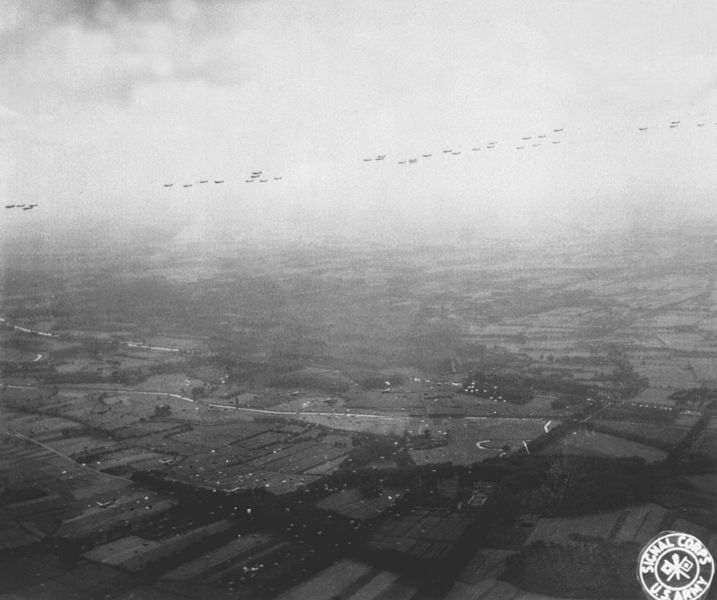
The traffic cleared and Guderian reached the Meuse one day earlier than planned. On the 13th of May, he had infantry and engineers cross the river in inflatable rafts, so they could neutralize French bunkers and build pontoon bridges for the tanks.
By nightfall, the defenders were routed. The French counterattacked the next morning, but Guderian, leading from the front, had made the snap decision to set up a defensive line with artillery.
High command ordered him to wait for reinforcements, but Guderian disobeyed and pushed ahead. Between May the 15th and 17th, Guderian repulsed armoured French attacks in Stonne and Montcornet, although it was not easy. Amongst his opponents, Brigadier General Charles de Gaulle, who almost managed to capture Guderian. As he remembered:
“His tanks succeeded in penetrating to within a mile of my advanced headquarters”
This was Guderian’s masterpiece, Operation Sickle Cut was a success beyond expectations. This appeared too good to be true to High Command, which may explain their later cautioun.
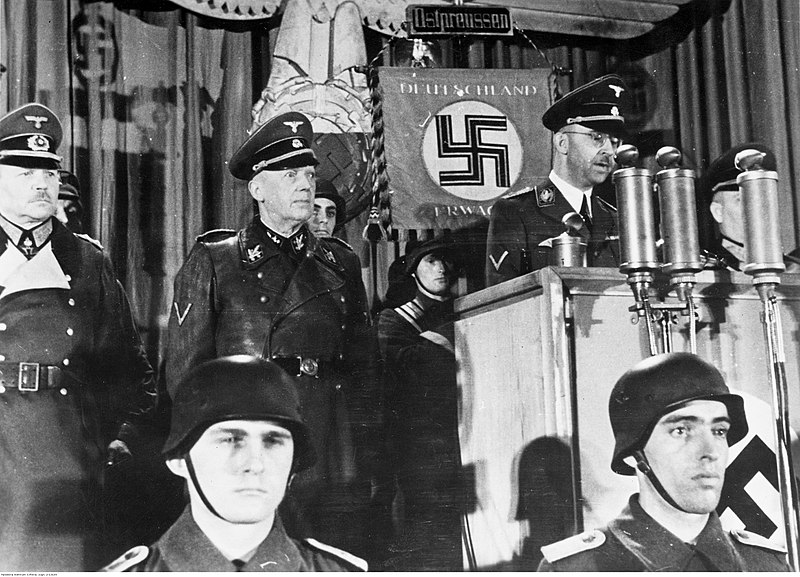
By the 24th of May, the bulk of the British Expeditionary Force was encircled at Dunkirk. An easy prey. But General Von Rundstedt, Guderian’s immediate superior feared an allied pincer movement and ordered that his panzers stopped 10 miles from Dunkirk. Guderian was allowed to proceed only on the 26th. By then, the French had strengthened their defences around the Dunkirk pocket, allowing for the evacuation of the British.
This surely frustrated Guderian. But, overall, his campaign was a success, resulting in French surrender in June.
Emboldened by the victories brought on by the War of Movement, Hitler started drawing plans to invade the Soviet Union. Operation Barbarossa was launched in June 1941, and Schnelle Heinz was again to the fore.
The campaign was nightmarish. As we now know, the Army units were followed by the SS Einsatzgruppen, specially dedicated to rounding up, deporting and murdering millions of Jews, Roma and other targeted groups in Soviet territory.
Guderian was leading Panzergruppe nr 2, heading towards Moscow in late 1941. Had he been involved in such atrocities? Or was he at least aware?
Evidence suggests that Guderian was not an anti-Semite. Possibly he knew that Jews and other so-called ‘undesirables’ were sent to concentration camps for a life of hardships. And for sure, he knew that his panzers had been built by slave labourers from occupied nations. But it may be that he didn’t know about the systematic killings. Even his wife Gretel, a stronger admirer of Hitler’s than Guderian, later was shocked by learning of the truth behind the camps. Both were convinced that Himmler and the SS were the only responsible, not Hitler.
If he somehow had no knowledge of the death squads, Guderian surely had realised by this time that Hitler was not a leader he could follow blindly.
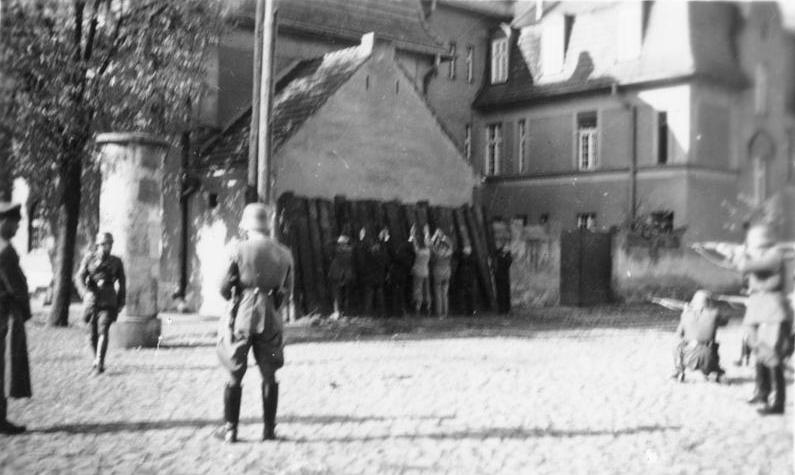
As the Fuhrer imposed ill-judged decisions on his Generals, Guderian was frustrated by the lack of criticism. As the Russian campaign hardened, he wrote to his wife:
“Everybody is scared of the Führer and nobody dares say anything!”
As Autumn and Winter set on, Guderian’s panzers stalled in the mud and snow, harassed by an increasingly stiff Russian resistance. One of his most famous quotes is
“There are no desperate situations, there are only desperate people!”
And yet the situation would prove desperate even to him.
“We have severely underestimated the Russians, the extent of the country and the treachery of the climate. This is the revenge of reality.”
In December of 1941, Guderian defied an order from Hitler to advance on Moscow, and instead pulled back his Panzergruppe 100 miles from the capital.
This insubordination cost him his job. Hitler forced Guderian to retire, but rewarded him with a farm in Prussia. Countryside life did not sit well with Guderian, apparently: during this period a pre-existing heart condition worsened. But he had no time to properly recuperate: he was soon to be recalled into service.
Back in action[TA3]
In 1943 the situation for the Axis was worsening and the military convinced Hitler that Guderian was needed. Hitler agreed and recalled Guderian from retirement, appointing him Inspector General of Panzer forces. This did not appease his temper, though, and his shouting matches with the Fuhrer resumed.
In summer of 1943 he had argued to contain Soviet counter-attacks by a strategy of dynamic mobile defence. This would imply engaging the Red Army in a series of local clashes to defeat them in detail and delay their advance. The strategy was a contradiction of his beloved Bewegungskrieg, but it just shows how he had realised that this was not a ‘silver bullet’ suitable to all theatres of war. Hitler did not listen to his advice, preferring the proposal of General Zeitzler: concentrate almost all German armoured divisions in Kursk, to defeat the Soviets in one decisive battle.
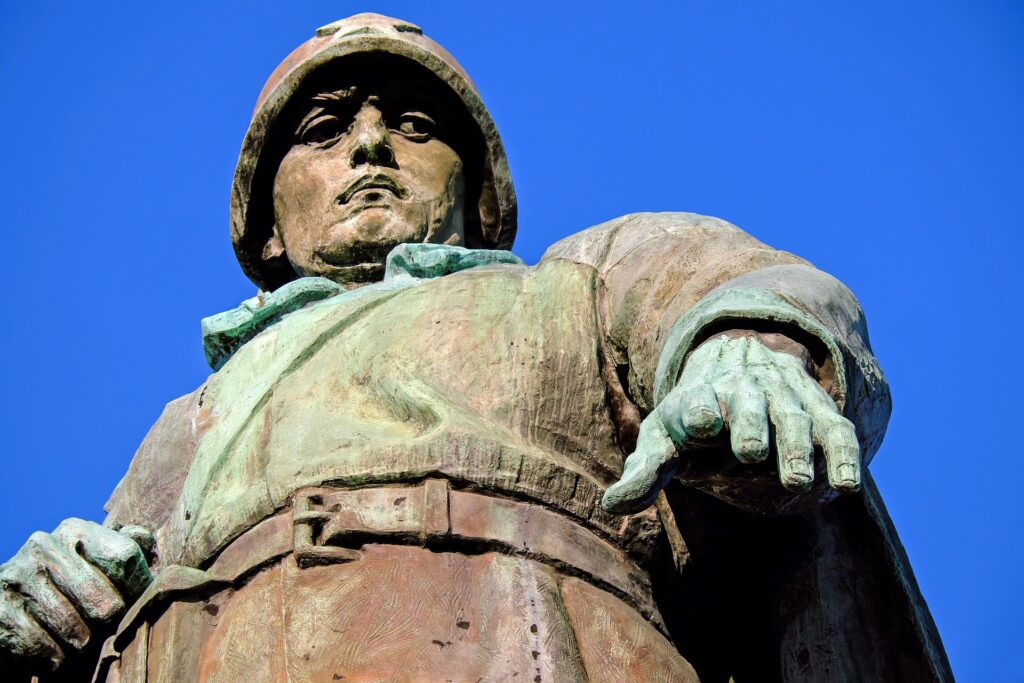
The Battle of Kursk raged on from the 4th to the 12th of July 1943. It was a close call, with heavy losses on both sides. But in the end the Soviets prevailed, and from then on, the War on the Eastern Front became one of retreats for the Germans.
The following year, after yet another suspension for insubordination, Guderian was approached by the circle of Colonel Von Stauffenberg, who were plotting to assassinate Hitler.
Guderian refused to participate, although he did not report the conspirators, nor he warned the Fuhrer.
The failed assassination took place on the 20th of July 1944, followed by a purge of military leadership. Ironically, now Guderian was one of the few remaining leaders that Hitler could trust for the war effort. The Fuhrer appointed Guderian as new Army Chief of Staff.
Guderian’s main focus now was to defend Germany from the impending Soviet counter-attack and occupation. He knew very well that the war could not be won but intended to resist as long as possible. The main hindrance to his plans, was the meddling Fuhrer himself.
In March 1945, he was vocally opposing Hitler in Staff meetings. Hitler decided to get rid of Guderian and ordered him to take six weeks of sick leave.
The order was meant to hurt him, ironically it may have saved him. Berlin would be surrounded by the Red Army the following month, while Heinz and Gretel were in a cardiology hospital in Munich. This is where US forces captured Guderian on the 10th of May 1945. The fifth anniversary of Operation Sickle Cut.
Guderian was sent to Nuremberg, but not put immediately on trial. The Russians wanted to charge him with war crimes, but the Western Allies didn’t comply. In 1946, Guderian was imprisoned in the POW camps of Allendorf and Neustadt.

During his captivity, Allied military tried to evaluate the extent of his involvement in Nazi war crimes. As he did not cooperate in interrogations, they placed him in confinement with two other Generals, Geyr and Leeb, and wiretapped the cell. Even them he kept his cards close to his chest. This is the only conversation in which he admits his support of party policies:
Geyr: “Any objective observer will admit that National Socialism raised the social status of the worker, and in some respects even his standard of living as long as that was possible.”
Leeb: “This is one of the great achievements of National Socialism. The excesses of National Socialism were in the first and final analysis due to the warped personality of the Fuhrer”
Guderian: “The fundamental principles were fine.”[TA4]
It was not enough to charge him and Guderian was released on his 60th birthday
[7th of June 1948]
In the following years he contributed to the organisation of the Bundeswehr, the armed forces of West Germany. He returned to writing, drafting his memoirs and more military theory works.
His autobiography ‘Panzer Leader’, also known as ‘Memoirs of a soldier’ was published in 1952, becoming an international best seller. Soon after its publication, Guderian’s health failed. He died in Schwangau bei Fussen on the 14th of May, 1954, the anniversary of his victory on the Meuse.
A critical look[TA5]
So far I have told you the most widely accepted version of Guderian’s life story, the official version for many decades after his death. However in the year 2000s, Guderian’s career and legacy have come under scrutiny from several historians, such as Russell Hart, Marcel Stein or Pier Paolo Battistelli.
These authors claim that Guderian’s military capabilities were undeniable, although he greatly exaggerated them through his writings. Hart for example claims that his victories always came from a position of strength and numerical superiority, never from a position of weakness. While Battistelli argues that his true genius was as author and publicist of his own image as the mastermind behind the blitzkrieg, or bewegungskrieg.
It can be argued that being in a position of strength is a sign of skill, too, as it requires planning and preparation. And that autobiographies naturally tend to be embellished accounts.
Other arguments are more disturbing, though.
Guderian always portrayed himself as distanced from Nazi excesses, and as a fair combatant. Yet, Marcel Stein writes that Guderian’s units in Russia actively executed under his orders the infamous ‘Commissar Orders’. This was the summary execution of war prisoners suspected to be Political Commissars or actively representing Bolshevik ideology. And that, is a war crime that would not have been forgiven at the Nuremberg trials.
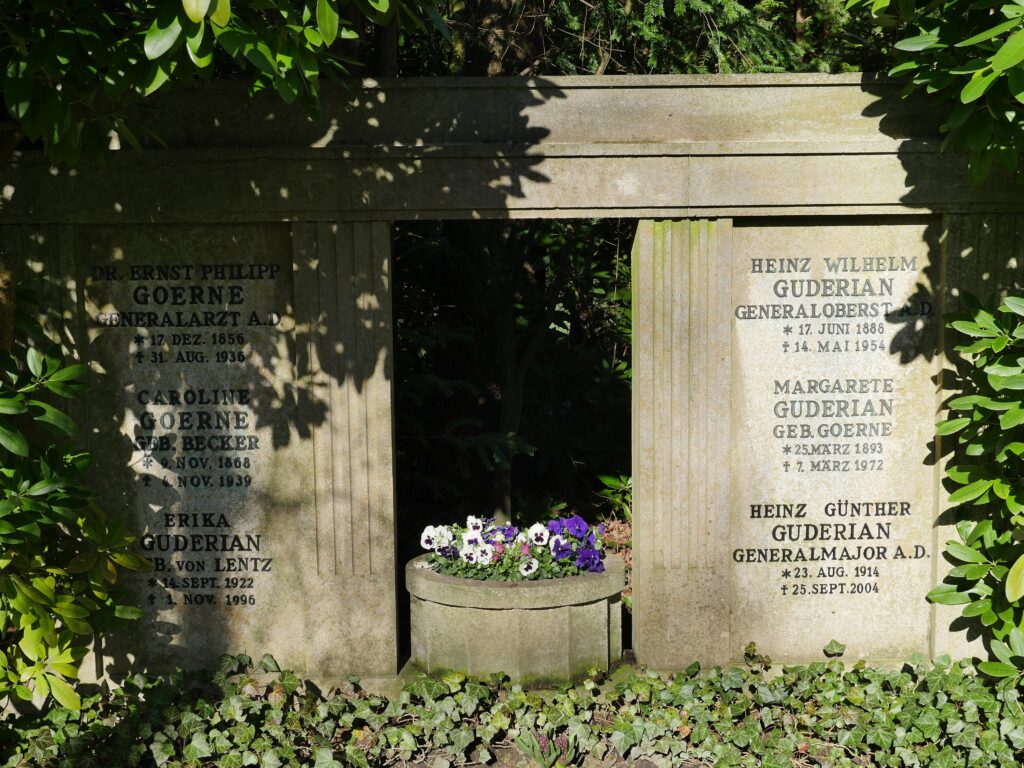
Hart also claims that during the July 1944 coup against Hitler, Guderian opportunistically played both sides, ready to join the winner to get a promotion as Chief of Staff. As acting Chief of Staff, on the 29th of July, Guderian issued an order forcing all officers to become members of the Nazi Party, implying that he was closer to Nazi ideology that he would have us believe.
I will leave the final judgement to you, in the comments. Heinz Guderian: a military genius loyal to his Country, or a self-serving opportunistic Nazi?
[TA1]https://biography.yourdictionary.com/heinz-guderian
http://www.achtungpanzer.com/gen2.htm
[TA2] [TA3]



